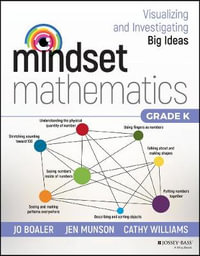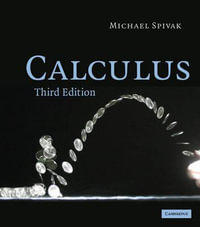
Understanding and Implementing the Finite Element Method
Paperback | 30 July 2006
At a Glance
Paperback
$310.40
or
Aims to ship in 15 to 25 business days
The finite element method is the most powerful general-purpose technique for comput-ing accurate solutions to partial differential equations. Understanding and Implementing the Finite Element Method is essential reading for those interested in understanding both the theory and the implementation of the finite element method for equilibrium problems. This book contains a thorough derivation of the finite element equations as well as sections on programming the necessary calculations, solving the finite element equations, and using a posteriori error estimates to produce validated solutions. Accessible introductions to advanced topics, such as multigrid solvers, the hierarchical basis conjugate gradient method, and adaptive mesh generation, are provided. Each chapter ends with exercises to help readers master these topics. Understanding and Implementing the Finite Element Method includes a carefully documented collection of MATLABr programs implementing the ideas presented in the book. Readers will benefit from a careful explanation of data structures and specific coding strategies and will learn how to write a finite element code from scratch. Students can use the MATLAB codes to experiment with the method and extend them in various ways to learn more about programming finite elements. This practical book should provide an excellent foundation for those who wish to delve into advanced texts on the subject, including advanced undergraduates and beginning graduate students in mathematics, engineering, and the physical sciences.Preface; Part I: The Basic Framework for Stationary Problems. Chapter 1: Some Model PDEs; Chapter 2: The weak form of a BVP; Chapter 3: The Galerkin method; Chapter 4: Piecewise polynomials and the finite element method; Chapter 5: Convergence of the finite element method; Part II Data Structures and Implementation. Chapter 6: The mesh data structure; Chapter 7: Programming the finite element method: Linear Lagrange triangles; Chapter 8: Lagrange triangles of arbitrary degree; Chapter 9: The finite element method for general BVPs; Part III: Solving the Finite Element Equations. Chapter 10: Direct solution of sparse linear systems; Chapter 11: Iterative methods: Conjugate gradients; Chapter 12: The classical stationary iterations; Chapter 13: The multigrid method; Part IV: Adaptive Methods. Chapter 14: Adaptive mesh generation; Chapter 15: Error estimators and indicators; Bibliography; Index.
Industry Reviews
'Upon completion of this book a student or researcher would be well prepared to employ finite elements for an application problem or proceed to the cutting edge of research in finite element methods. The accuracy and the thoroughness of the book are excellent.' Anthony Kearsley, National Institute of Standards and Technology
ISBN: 9780898716146
ISBN-10: 0898716144
Published: 30th July 2006
Format: Paperback
Language: English
Number of Pages: 392
Audience: Professional and Scholarly
Publisher: CAMBRIDGE UNIV PR
Country of Publication: US
Dimensions (cm): 24.77 x 17.15 x 1.91
Weight (kg): 0.68
Shipping
| Standard Shipping | Express Shipping | |
|---|---|---|
| Metro postcodes: | $9.99 | $14.95 |
| Regional postcodes: | $9.99 | $14.95 |
| Rural postcodes: | $9.99 | $14.95 |
How to return your order
At Booktopia, we offer hassle-free returns in accordance with our returns policy. If you wish to return an item, please get in touch with Booktopia Customer Care.
Additional postage charges may be applicable.
Defective items
If there is a problem with any of the items received for your order then the Booktopia Customer Care team is ready to assist you.
For more info please visit our Help Centre.
You Can Find This Book In
This product is categorised by
- Non-FictionMathematicsDiscrete Mathematics
- Non-FictionMathematicsCalculus & Mathematical AnalysisDifferential Calculus & Equations
- Non-FictionMathematicsApplied Mathematics
- Non-FictionScienceScience in GeneralMaths for Scientists
- Non-FictionEngineering & TechnologyTechnology in GeneralMaths for Engineers























